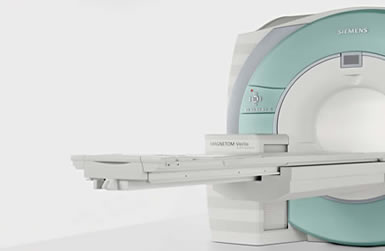|
|
|
In the memory of my great friend |
|

 |
It is with great sadness that we said
goodbye to Inomed founder and CEO Rudi Mattmüller, who
passed away on 22 May 2023 after a serious illness. More
than 30 years ago, Rudi Mattmüller laid the foundation
for the inomed Group and successfully shaped the
development of the company over many years. With his
innovative ideas and his extraordinary personality, he
has had a decisive influence on an entire industry. With
the death of Rudi Mattmüller, we lose a person and a
friend to whom we own a great deal. Due to his friendly
nature and professional expertise, Rudi Mattmüller was
respected and appreciated by everyone. He will always
remain a role model for us and we will honor his memory.
Our deepest sympathy goes to his family. Your Friend
Munir Elias |

FUNCTIONAL NEUROSURGERY
|
Advances in stereotactic
neurosurgery and deep brain stimulation |
 |
The full potential of
intraoperative neurophysiology is realized
during the performance of so-called functional
neurosurgical procedures. During these
interventions therapeutic lesions or stimulating
electrodes are stereotactically placed within
deep brain structures to treat movement
disorders such as Parkinson’s disease (PD),
essential tremor (ET), dystonia, affective
disorders, and chronic neuropathic pain.
The deep location of these structures precludes
direct surgical approaches. Instead, surgeons
rely on a combination of image-guided
stereotactic techniques and intraoperative
neurophysiology to place the therapeutic lesions
or stimulating electrodes with acceptable
accuracy and safety. Unlike tumors, which are
relatively large and easily identified on CT or
MRI, functional neurosurgical targets typically
are small and poorly visualized with current
imaging modalities. Moreover, because these are
physiologic as much as anatomic targets,
image-based targeting may incompletely identify
the desired location. Consequently,
intraoperative recording and stimulation
techniques have been developed to aid target
localization. These techniques complement
anatomical targeting by providing real-time
electrophysiological data concerning probe
position and the surgical target. The surgeon
and physiologist use these data to “fine-tune”
their anatomic targeting before completing the
therapeutic intervention. Thus employed,
intraoperative neurophysiology does not simply
monitor surgical activity; it guides it. |

|
Advances of pain management |
 |
Pain is a major public health problem. It is
the most common symptom for which patients seek medical care and
the primary complaint of approximately half of all patients who
visit a doctor. Several surveys conducted in European countries
have found that nearly 50% of adults suffer from one or more
types of pain or discomfort at any given point in time.
Chronic pain is defined as pain that lasts for more than six
months and does not respond to medical therapy. It may result
from either a previous injury long since healed or it may have
an on-going cause, such as nerve damage, cancer, chronic
infection or failed back surgery syndrome (FBSS).
Chronic
pain can have a drastic effect on a patient’s quality of life.
Severe chronic pain may weaken a patient’s physical and
psychological health far beyond that which might be expected for
the patient’s underlying disease. |
 |
Physical
problems
Patients who suffer from chronic pain are more likely to
be in poor general health. This is the result of
negative health consequences associated with
unrelieved pain, including:
● Increased stress, metabolic rate, blood clotting and
water retention
● Delayed healing
● Hormonal imbalances
● Impaired immune system and gastrointestinal
functioning
● Increased heart rate and blood pressure
● Increased blood sugar
● Decreased digestive activity
● Reduced blood flow
● Loss of function and atrophy |
 |
Psychological problems
Chronic pain is often associated with a long history of
psychological and social problems. Patients with chronic
pain may lose their jobs and income. In addition, pain
can lead to emotional distress and a deterioration in
family and social life, while preoccupation with pain
can lead to a downward
spiral of irritability and depression. |
 |
For patients with chronic pain, pain
management typically involves a combination of physical
therapy, oral medication and other conservative
therapies. Some patients will need surgical intervention
to address the mechanical condition causing the pain,
whereas others may require advanced interventions.
Neurostimulation and intrathecal drug delivery (IDD)
often offer alternatives to destructive procedures or
sometimes more costly spinal surgeries in appropriately
selected patients. Although pharmacotherapy pain
treatment may reduce pain, it may also be associated
with adverse effects that will impact on a patient’s
quality of life. Common adverse effects of pain
management strategies include reduced alertness or
mobility, dizziness or mental confusion, nausea,
vomiting, constipation or urinary retention, and motor
and sensory loss or weakness. |
 |
Treatment of chronic pain typically involves
a multidisciplinary approach. Management of chronic pain
patients with neuromodulation or IDD requires the interaction of
many specialists on a multidisciplinary team. The team draws on
the expertise of these specialists with the goal of achieving an
effective level of pain relief for the patient. The key members
of the team are referring physicians, who typically are involved
in all aspects of chronic pain treatment; implanting physicians
(normally anesthesiologists, neurosurgeons, spine surgeons and
general surgeons) and nurses with skills and training to implant
products for neurostimulation and intrathecal drug delivery; and
other personnel who work closely with patients, in particular,
the patient management co-ordinator. |
 |
|
|
